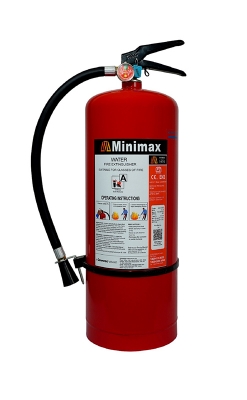Clean Agent Type

| Specifications | 1 kg | 2 kg | 4 kg | 6 kg | 9 kg |
| Fire Rating | - | 1A 21B | 2A 34B | 2A 55B | - |
| Working Temperature | -30 °C to +60 °C | ||||
| Burst Pressure | 55/80 bar min., 110 bar (actual) approx | ||||
| Cylinder Testing Pressure | 35 bar for 30 sec. | ||||
| Operating Pressure | 8 bar | ||||
| Min. Effective Discharge Time | 8 sec. | 13 sec. | |||
| Propellant | Dry Nitrogen | ||||
| Charge | Grenoz® / FK 5-1-12 | ||||
Minimax Grenoz® clean agent fire extinguishers contain environment friendly UL approved Grenoz® 1230 or FK 5-1-12 gas as an extinguishing agent. Clean agent is a fire suppressant stored as liquid that discharges in the form of gas. Minimax GRENOZ™ is effective for use on Class A (ordinary solids), Class B fires (flammable liquids) and Class C fires (flammable gases). These fire extinguishers can also be used on electrically actuated fires. These extinguishers are environmentally safe, leaves no residue and intended for the protection of facilities where electrical panels or electronic equipment’s are installed.
Clean agent extinguishers act to extinguish a fire by smothering effect. As the extinguishing agent does not conduct electricity back to the user, they are most effective on electrical fires.
Look For More
FAQ's
- Class A, B and C Fire Hazard – Fire Extinguisher within 15 m travel distance.
- Class D, F and Special Fire Hazard – Fire extinguisher within 10 m travel distance.
















